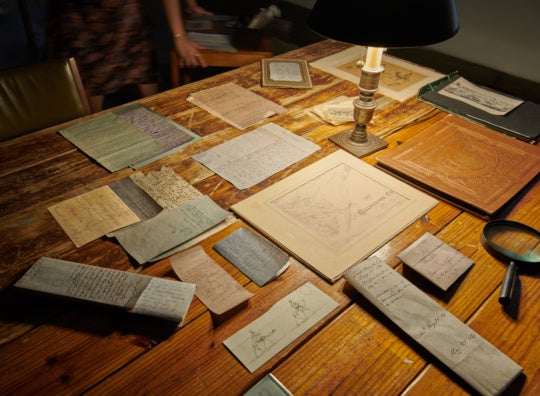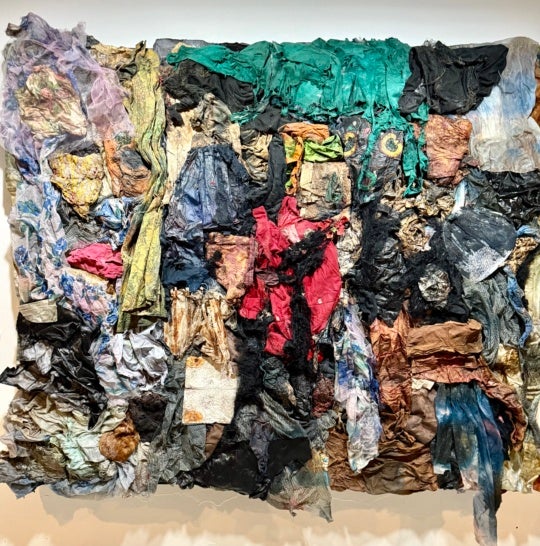
Dodge & Burn is a series of photo essays documenting local culture with a focus on artful imagery, movement, and light.
Atlanta is speckled with spaces that have been transformed from their original purpose into something that better suits the needs of a growing city. Most of these transformations take an old factory of some sort and create trendy open-concept lofts on top of commercial storefronts—the most recent example being the Ponce City Market, which is being renovated into a mix of retail, restaurant, and residential spaces. These derelict buildings appear most often in larger metropolises as industries move from inside the city limits to the suburbs. And as industries shift locations, so do populations, which in turn require a better transit system. Thus, highways are constructed that sometimes disrupt neighborhood construction and somewhere in the shuffle of all these businesses, people, and roads, sometimes those buildings which were at the center of a neighborhood or city are pushed out, or replaced with a newer, larger facility. For whatever reason, spaces change over the years, and if the initial construction has weathered time mostly intact, it makes more financial sense to renovate than to rebuild.


Although this trend has picked up in the past 10 years, some spaces have longer histories of functioning as new facilities. The Southeast Community Cultural Center, better known as The Arts Exchange, was formerly Grant Park Elementary School, and now has been adapted to house artist studios, the Paul Robeson Theater, the Xchange Gallery, the Mama Nanji Youth Gallery, office space for non-profit arts organizations, classrooms, rehearsal spaces, and grounds for special events. The Southeast Community Cultural Center took over the building in 1984 and has been operating it as The Arts Exchange ever since.



Walking into the space and even driving up to the tucked away location, you feel as if you’ve been transported to a place where time has stopped. The building was constructed in the 1930s and looks as if it has remained the same over the years. There are signs of aging, but the construction feels sturdy, as if it would do more damage to a wrecking ball than the other way around. With few exceptions, the building is largely the same save a change of paint here or a new lighting fixture there. The main dramatic difference is the three-piece mural painted on its facade, featuring portraits of Florence Reece, Paul Robeson, and Woodie Guthrie, completed by David Fichter.



Inside, the smell of an old school hits you; cool and musty, but a scent that gives a sense of safety and security. It reminds me of my own childhood elementary school, even some of the tilework looks the same; as if there was a tile stamper back in the 1930s whose sole job was to produce the same tile, in color and shape, for every elementary school in Georgia. The Arts Exchange is composed of two floors, with the first containing the Paul Robeson Theater. The theater itself is in need of some repairs, but is still operational (though it is used only occasionally). The rest of the building is laid out how you would expect a simple, small elementary school to be: with one main stairway and long, wide hallways. The classrooms, once lined with chalkboards and bulletin boards, have since been gutted and refashioned by various artists and non-profit organizations (including BURNAWAY).
Overall, the place could probably use another go at renovation, but there is a charm in the state of things. The building serves as a monument and reminder of an Atlanta that may no longer exist, but is still palpable.
Check BURNAWAY’s homepage for new photography every week, and watch our Flickr account for regular updates!
Dodge & Burn: The Arts Exchange
Related Stories
Reviews
Reviews
Studio Visit
Diedrick Brackens: the shape of survival in the Walter and Linda Evans Center for African American Studies at the SCAD Museum of Art, Savannah
Anna Nelson-Daniel reviews Diedrick Brackens: the shape of survival in the Walter and Linda Evans Center for African American Studies at the SCAD Museum of Art, Savannah.
From Gulf to Gulf: Myriam Amri and Xitlalli Alvarez Almendariz’s Archival Hauntings in An Act to Prohibit Camels and Dromedaries from Running at Large, Friends Gallery, Houston
May Howard reviews the role of artists-archivists Myriam Amri and Xitlalli Alvarez Almendariz in An Act to Prohibit Camels and Dromedaries from Running at Large at Friends Gallery, Houston.
In the Studio with Matthew Rosenbeck
Kristina Kay Robinson visits the studio of Matthew Rosenbeck, a multidisplinary artist working in New Orleans who repurposes salvaged, found materials.




